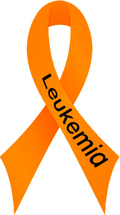|
ALCAPA
Pediatric Sinusitis
0 Comments
 1. Leukostasis is a medical emergency and requires emergent intervention. - High mortality rate (up to 40%)! - Can cause end organ damage - may present with neuro symptoms (like ischemia). - Start IV Fluids to dilute the WBC. - Hydroxyurea can also help decrease WBC. 2. Always consider tumor lysis syndrome in any child who recently started chemotherapy. - Seen with conditions with large tumor burden (ex, large solid tumor, leukemia). - Look for High Potassium, High Phosphorous, and LOW Calcium! - Start IV Fluids - Check ECG. Treat Hyperkalemia! - Rasburicase for elevated uric acid. 3. It's okay to wait for the results of a CBC with diff in stable appearing patient on chemotherapy with a fever. - Neutropenic Fever untreated has a high mortality (80%), but treated appropriately it is 1-3%. 4. Involve oncology early whenever one of their patients arrive in the CED.  1. Perceived conflicts of interest resulting in blind spot bias exist among stroke opinion leaders and the authors of the ACEP tPA Clinical Policy. 2. For Clinical Guidelines to be trustworthy, they must: 1) have transparent methodology, 2) manage conflicts of interest, 3) have a balanced guideline development group composition, and 4) have undergone adequate balanced external review. 3. It is unlikely that the revised ACEP tPA Clinical Policy will substantially impact current perspectives related to the use of IV tPA for stroke  Background on Costs of Care in the US · Health Care expenditure consumes 17.7% of US GDP, almost twice the average of other industrialized nations at 9.3%. · Heath outcomes indicators are no better in the US than in other industrialized nations. · Unnecessary medical tests and procedures are estimated to cost $700 billion/year in the US, 5% of GDP. · Approximately 2/3 of US bankruptcies are due to medical bills. Defining Value in Health Care · Value = (Outcomes/Cost) · Outcomes are dependent on results, not the volume of medical tests and procedures we order/perform. · Costs are dependent on the volume of medical tests and procedures we order/perform. · To increase value, we must improve outcomes, while being mindful of the volume of medical tests and procedures we order/perform. Cost-Effective Care Strategies in the ED · Utilize validated clinical decision rules (CDR) such as the Canadian Head CT Rule, and basic published guidelines such as the ACEP “Choosing Wisely” List of Top 5 Things Physicians & Patients Should Question. · CDR and publish guidelines are only effective in reducing costs if available to Physicians at time of order entry. Thus, electronic medical records should integrate decision support tools as part of the flow of order entry. · Cost transparency & Physician Cost Sensitization have been shown to help reduce costs of care when the Physician knows the cost of the interventions they are ordering. · Utilize Lean Methodology to improve workflow, eliminate waste, and improve outcomes. Considerations · Diagnostic laboratory testing/ imaging, as well as admissions are important uses of resources; remember this during your daily practice. · Physician practices are established in Residency and are difficult to modify after completion. · Learning to be a good steward of health care dollars is an important part of medical education and will continue to have an ever increasing impact on our practice; take costs of care into consideration with every patient encounter.  Transplanted organs - don't act like normal organs - won't hurt and are in weird locales RAID - Potential Complications to Consider Rejection - Hyperacute - w/in minutes - we won't see - Acute - Chronic Anatomy - Vascular - stenosis, aneurysm, thrombosis - Nonvascular - leak, scar formation, dislodged stint, stone formation Infection - First 28 days - nosocomial - 1-6 months - viral infections - CMV, hepatitis, EBV, HH6; oppurtunisitcs - PCP, listeria, fungal - > 6 months - Healthy - UTI, PNA, cold, Chronic viral infection - EBV, zoster, HSV Drug Toxicity - Transplant immunosuppressants - cyclosprine, tacrolimus > can hurt the kidneys; - Imuran, cellcept - hematologic effects - Lots of Drug- Drug interactions  Core Concepts • Prompt surgical consultation is recommended for patients with aggressive infections associated with signs of systemic toxicity and suspicion for necrotizing fasciitis. • Empiric antibiotic treatment should be broad and initiated early. • The LRINEC is a useful diagnostic adjunct in management to stratify patients who in the low, medium and high risk categories to aid in clinical management. • Goal as an ED physician is to identify these patients, aggressively resuscitate them and get surgery involved quickly. Risk Factors - old, DM, ETOH, immunocompromised, systemic disease (renal, heart, PVD) Classification - Anatomic - Depth - Microbial cause (polymicrobial [type I = most common], monomicrobial [type 2 = strep & staph], vibrio [type 3]) Clinical Features - nec fas is a clinical diagnosis > Pain at site of infection > Blisters/ bullae > Vital sign abnormalities LRINEC - CRP, WBC, Hgb, Na, Cr, Glucose > Low (<5) - prob < 50%, intermediate (6-7) prob 50-75%, High (>8) prob >75% Diagnosis - basic labs, imaging - US, plain films, CT - 80% sensitive, MRI Treatment - OR!!!!! - Antibiotics - PCN & Clindamycin (group A strep) - but cover broadly - vanc + zosyn Teaching points from our surgical colleagues 1. Early diagnosis 2. Early & extensive surgical intervention 3. Life over limb  Case 1 - S/P Arrest w/ STEMI
Case 2 - Ear Pain and Facial Palsy
Case 3 - Ataxia and Headache after Rollercoster Ride
 Dr. Fox Dr. Fox HYPOGLYCEMIA Presentation:
Not all patients recognize their own hypoglycemia well.
Some patients that are at high risk for hypoglycemia:
Treatment - we often do it wrong!
 THE TRAUMA CAPTAIN CAN HAVE A BIG IMPACT! -Good trauma rescucitation can have large impact on outcomes -Good rescuc should be organized, quiet, and rapid -Simulation important, ATLS compliance increased 56% to 83%, procedure completion time reduced -Review and understand the established protocols for trauma Before a CODE -Check code criteria and establish if appropriate personnel present -Assign roles: airway, procedures, ultrasound. -Anticipate possible procedures and prepare drugs/equipment -Set expectations prior to arrival of pt - expected time to completion of code/rescucitation -Be Loud and Calm At the CODE -Establish your leadership - "Everybody listen up" -Move patient after medic report -ABCs, primary and secondary survey, monitoring, lab studies -Continually articulate the plan and ultimate disposition. "Why are we still here?" -Feel them feet Assessing shock -Where's the blood? External, chest, abdomen, thighs, retroperitoneum -Pain control: Caution if shock, AMS, elderly Geriatric -No drama, quiet, can betray how sick they are -Low reserve, normal VS until crash -Get a lactate, liberal CT scanning -Admit these patients Pre-CT check list -CT is a dark place where trauma patients go to die -Before CT, do you Need ET tube? Chest tube? Pelvic binder? Tourniquet? Splints? -Do they really need CT, or do they need OR, angiography, or transfer?  Mechanisms of hyperthermia
Malignant Hyperthermia - Rare - Increased peripheral muscle activity due to ryanodine receptor issues - genetic component - Only seen with anesthesia - halothane, succinylcholine - Fast onset from exposure, severe and short lived - hyperK, muscle rigidity, autonomic instability, - increased CO2 on capnography Neuroleptic Malignant Syndrome - Due to altered DA transmission - seen with typical antipysch meds, lithium, environmental (heat) - Subacute, severe, lasts day-weeks - Lead pipe rigidity, autonomic instability, AMS Parkinsons Disease - abrupt withdraw of DA agonist therapy can cause hyperpyrexia Cocaine/ Stimulants - Hypothalamic stimulation, vasoconstriction, increased muscle activity - Fast onset, short duration, severe hyperthermia Serotonin Syndrome - Increased central 5HT activity - More common in drug drug interactions - SSRI/SSRI or SSRI & other serotonin agonists - TCA, demerol, linezolid, MAOI, tramadol, dextromethrophan (MAOI activity) - Subacute, moderate severity - AMS, muscle rigidity (LE>>UE), hyperreflexia & rigidity, autonomic instability - NBOME - designer drugs - increased serotonin activity OTHERS: Anticholinergic - increased muscarnic blockade Salicylate toxicity - uncouples cellular respiration Baclofen withdraw Complications from hyperthermia - Resp, PE, rhabdo, hepatic failure, hyperK Treatments - DC offending agents or restart withdrawn med - Physical cooling - Sedation - benzos, non depolarizing blockade - Secondary Treatments > Cyproheptadine - serotonin antagonist (for 5HT syndrome) - PO only > Dantrolene - for malignant hyperthermia - first line agent > Limited evidence for NMS - dantrolene has been tried - don't use as monotherapy > Dopamine agonist - bromocriptine, amantadine - dont use as monotherapy (long time to start acting) > ECT - unknown mechanism 54000 or 800-222-1222 - poison control |
Archives
August 2018
Categories
All
|
 RSS Feed
RSS Feed
